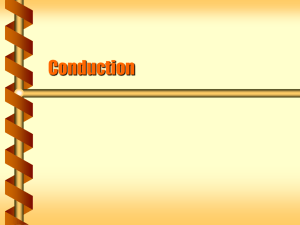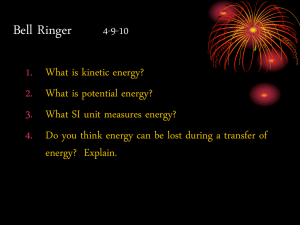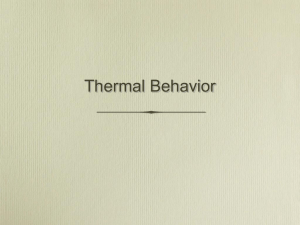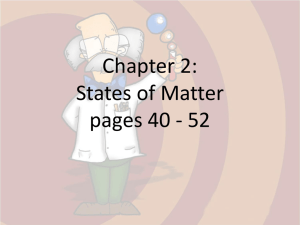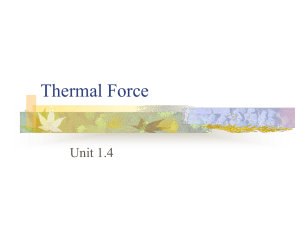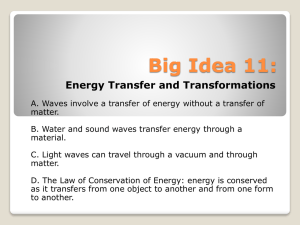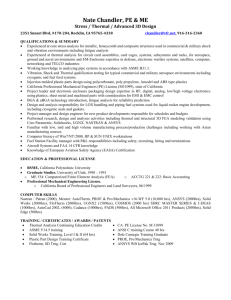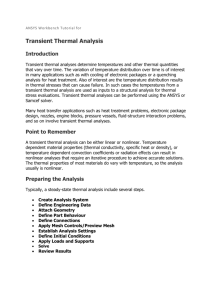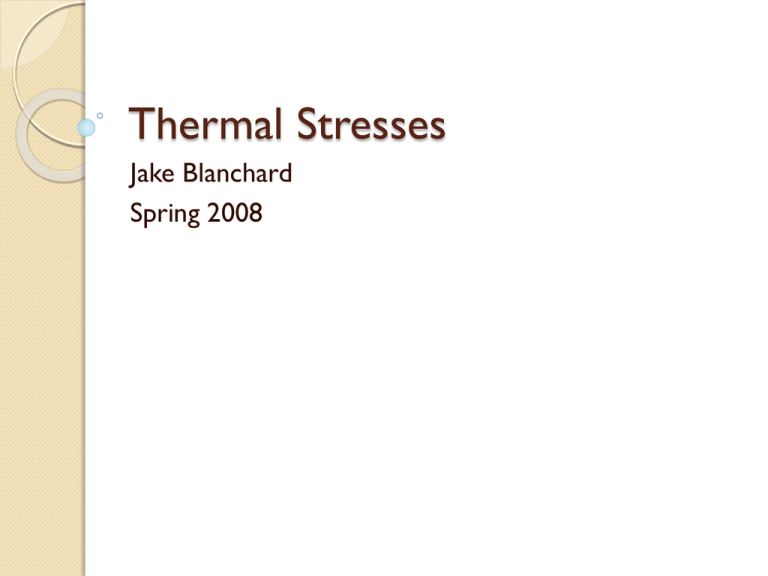
Thermal Stresses
Jake Blanchard
Spring 2008
Temp. Dependent Properties
For most materials, k is a function of temperature
This makes conduction equation nonlinear
ANSYS can handle this with little input from us
Examples:
◦ Copper: k=420.75-0.068493*T (W/m-K; T in K)
◦ Stainless Steel: k=9.01+0.015298*T
◦ Plot these vs. Temperature from 300 K to 1000 K
◦ Try:
◦ MP,KXX,1,420.75,-0.068493
Incorporating into ANSYS
Input polynomial coefficients into Material
Table
Set nonlinearity parameters
Everything else is the same
In-Class Problems h=1000 W/m2-K
Tb=50 C
Material 1 is Cu
Material 2 is SS
q=104 W/m2
1
2
1 cm
10
cm
Thermal Stresses
Thermal stresses occur when there is
differential expansion in a structure
◦ Two materials connected, uniform
temperature change (different thermal
expansion coefficients lead to differential
expansion)
◦ Temperature gradient in single material
(differential expansion is from temperature
variation)
Treating Thermal Stress in ANSYS
Two options
1. Treat temperature distributions as inputs
(useful for uniform temperature changes) –
must input thermal expansion coefficient
2. Let ANSYS calculate temperatures, then
read them into an elastic/structural analysis
Prescribing temperatures
Use: Preprocessor/Loads/Define
Loads/Apply/Structural/Temperature/On
Areas (for example)
Sample
1=2*10-6 /K
E1=200 GPa
1=0.3
2=5*10-6 /K
E2=100 GPa
2=0.28
Increase T by 200 C
Inner radius=10 cm
Coating thickness=1 cm
1
2
Calculating both temp and stress
Set jobname to ThermTest (File/Change Jobname…)
Main Menu/Preferences/Structural&Thermal&hmethod
Input structural and thermal properties
Create geometry and mesh
Input thermal loads and BCs
Solve and save .db file
Delete all load data and switch element type to
struct.
Edit element options if necessary
Apply BCs
Loads/Define Loads/Apply/Temperature/from
thermal anal./ThermTest.rth
Solve
Sample
1=2*10-6 /K
E1=200 Gpa
k1=10 W/m-K
1=0.3
2=5*10-6 /K
E2=100 Gpa
k2=20 W/m-K
2=0.28
Set outside T to 0 C
Set heating in 2 to 106 W/m3
Inner radius=10 cm
Coating thickness=1 cm
1
2
In-Class Problems h=1000 W/m2-K
Channels are 3
cm in diameter
k=20 W/m-K
E=200 Gpa
=0.3
= 10-5 /K
Tb=50 C
q=104 W/m2
2 cm
15
cm
10
cm



